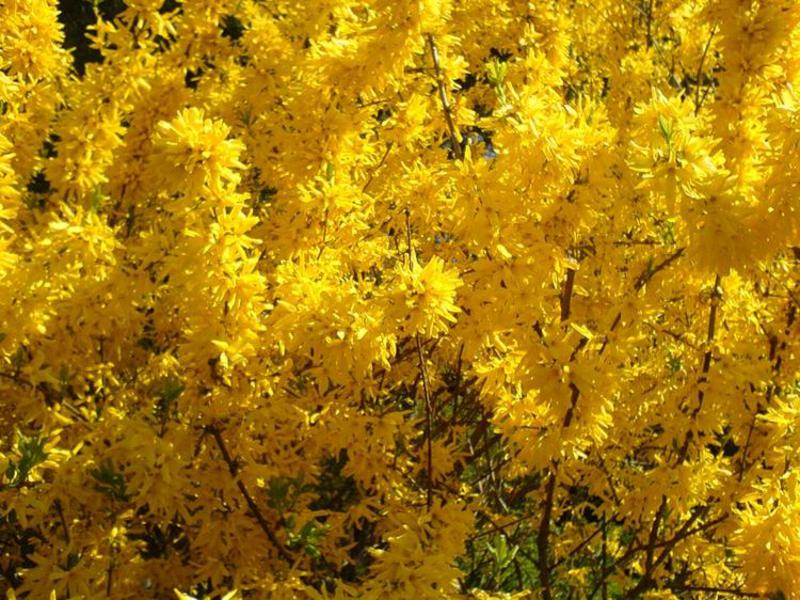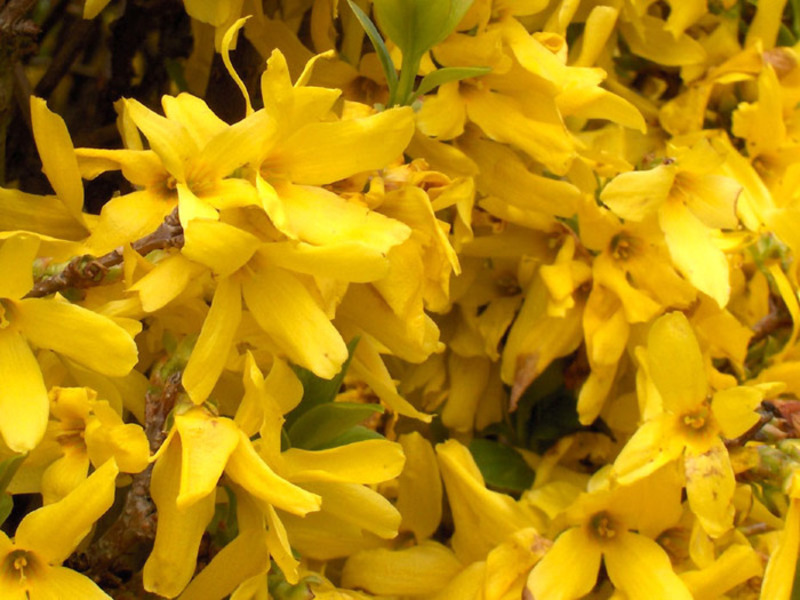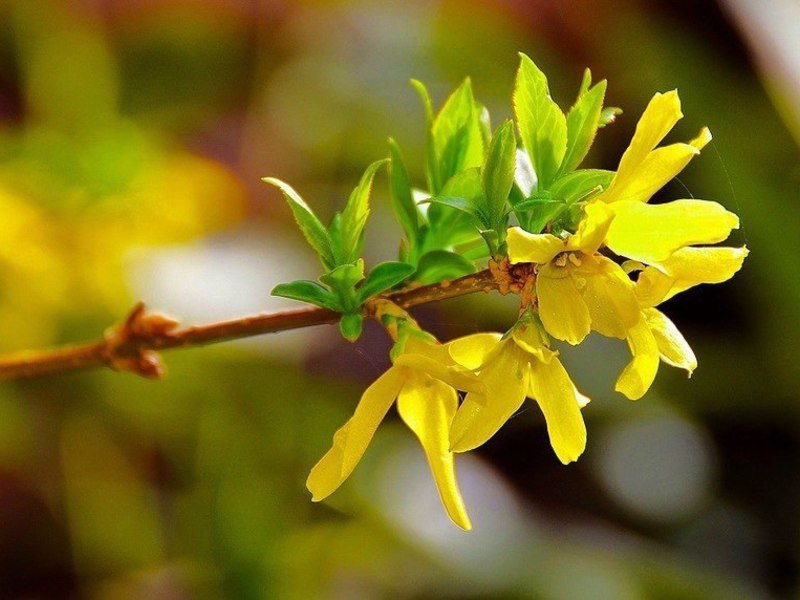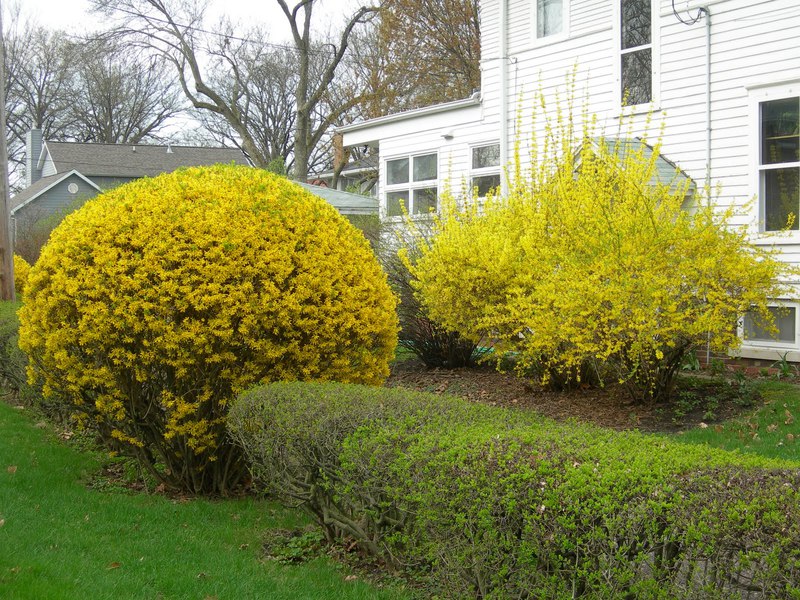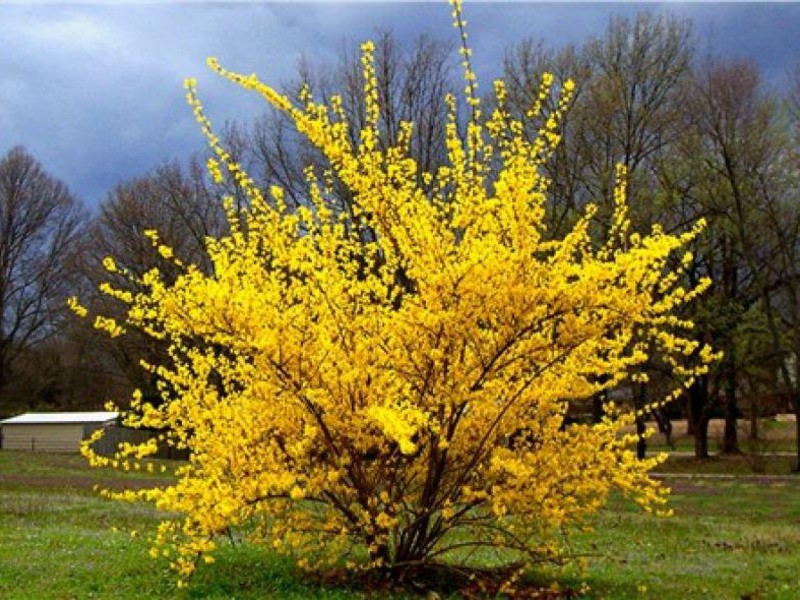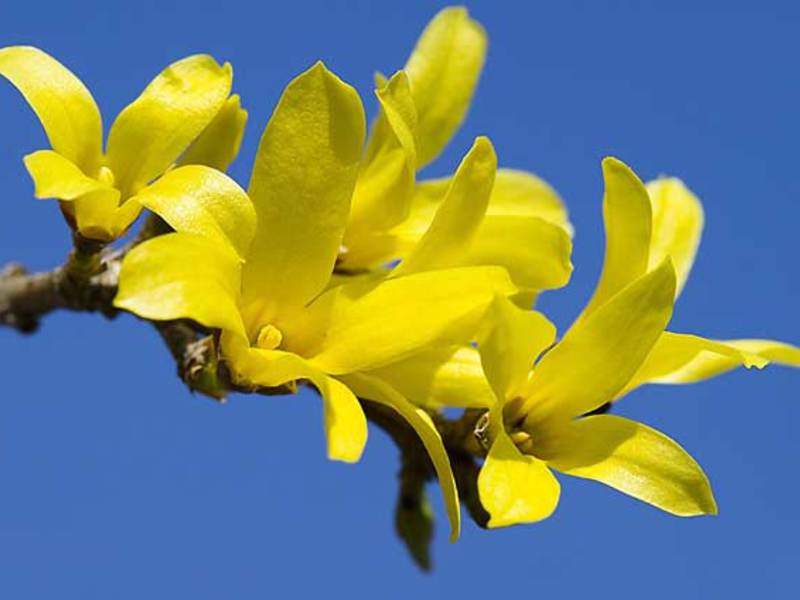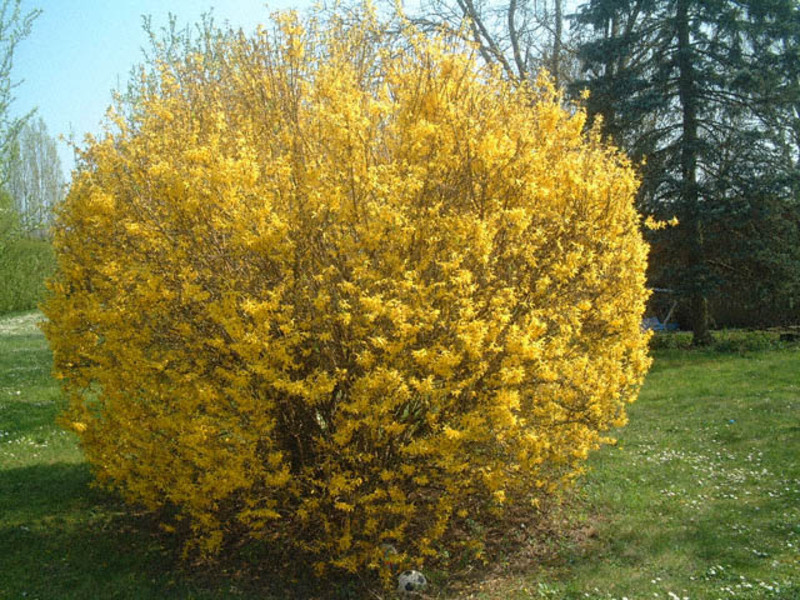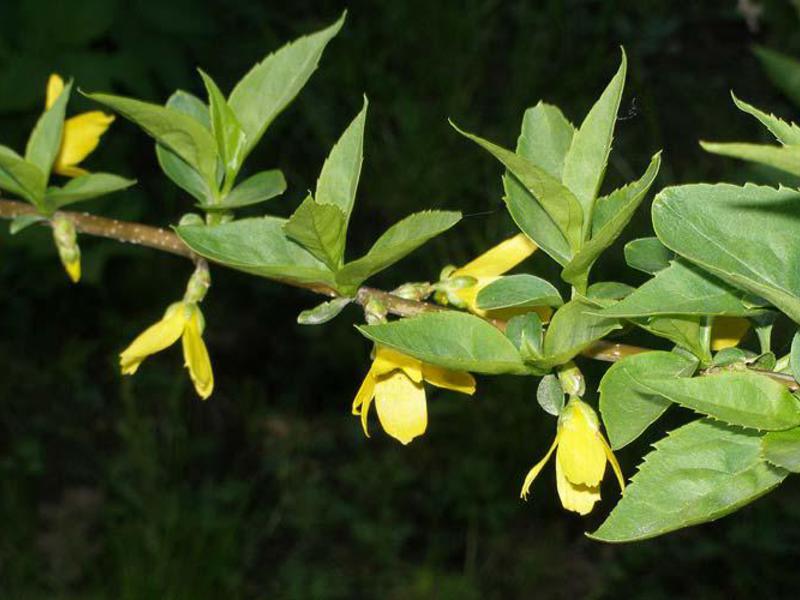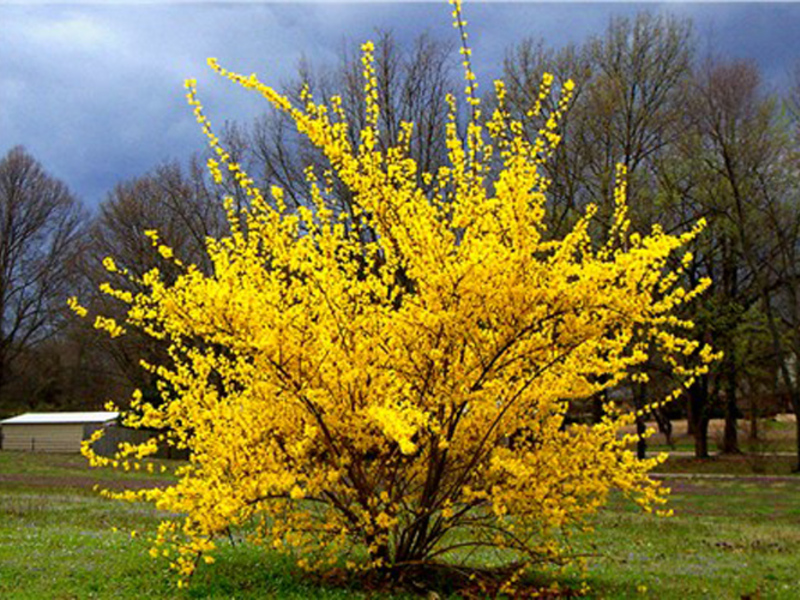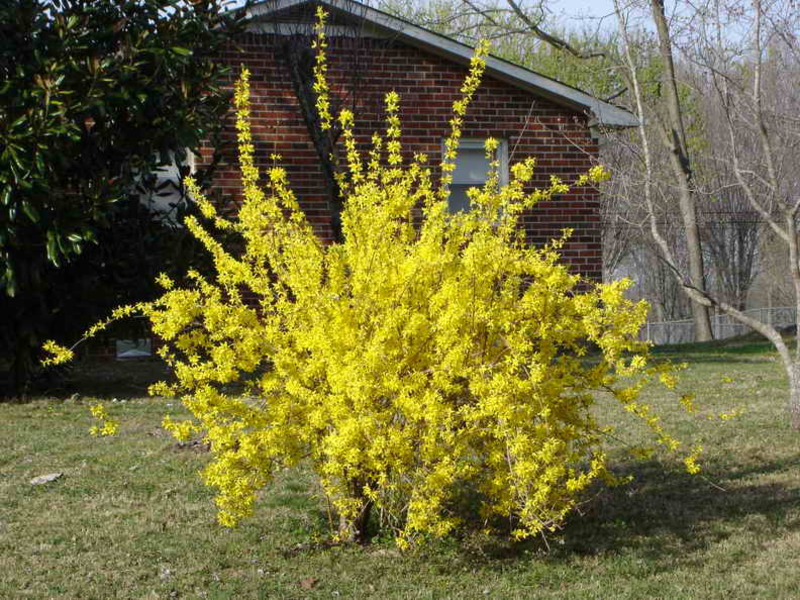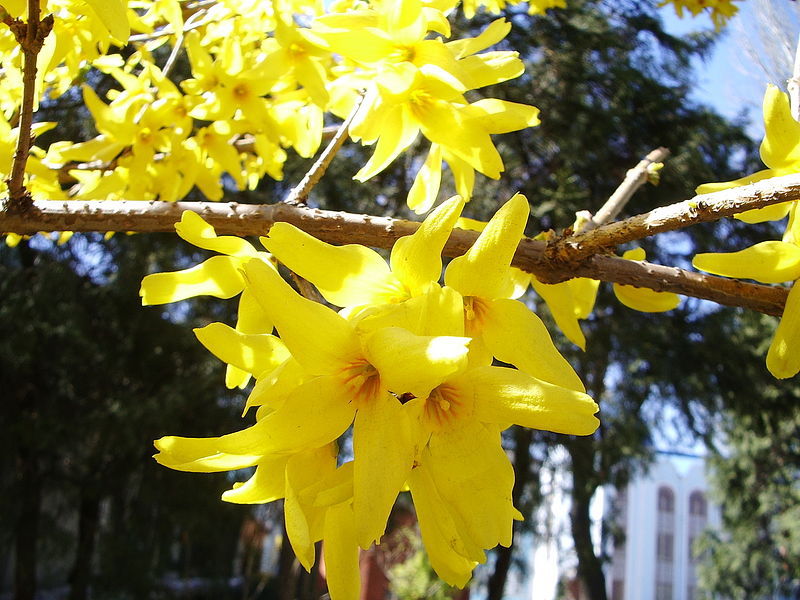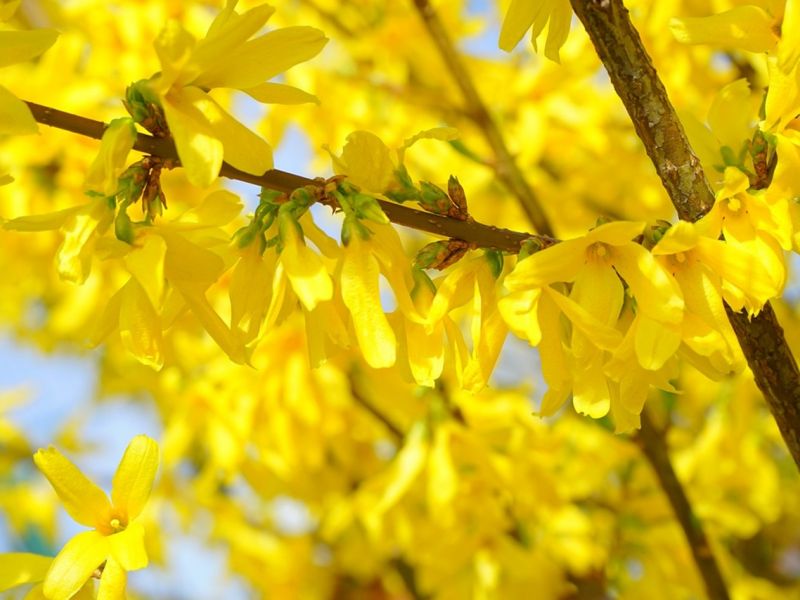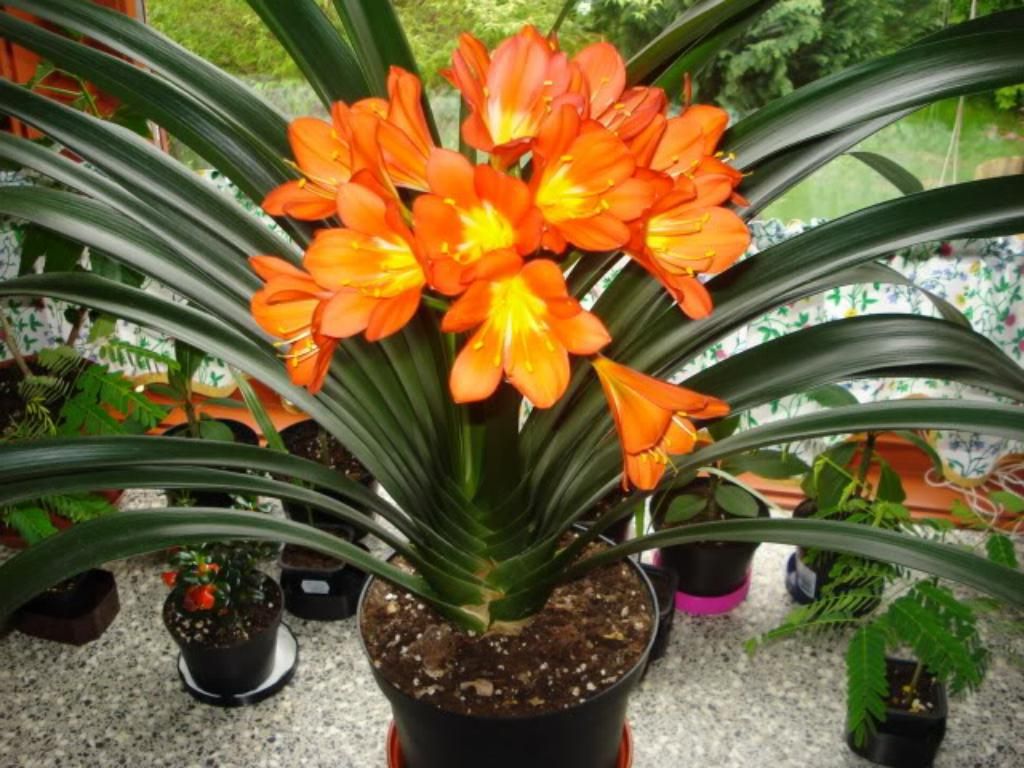Forsythia (forsythia) is a genus of shrubs that belong to the Olive family. They bloom beautifully in early spring, and their yellow flowers fascinate the eyes of every person. The flower owes its name to the world famous botanist William Forsyth, who was engaged in plant breeding and landscaping of Kensingen Palace. He first brought a shrub from China to a European country and created all the conditions for its natural growth and flowering. He became the first breeder to try to create a unique species that is most adapted to the weather conditions in Europe.
Today, this shrub is widespread in Russia, especially in the Moscow region. It is used in many household plots, since this type of plant does not require special care or any special gardening skills.
Content
Features of forsythia - description of the plant
Many people call forsythia a small tree, but in the biological reference it is the plant is classified as a shrub... Its height can vary from 1 to 3 meters. The leaves on the shrub are simple, oval, with small jagged edges. Their length is from 2 to 15 centimeters. On forsythia, bell-shaped flowers with a bright yellow color bloom in early spring. Flowering lasts up to 3 weeks, and at the end, a fruit-box with winged seeds appears.
Ideal conditions for growing forsythia
Despite the fact that the plant itself is unpretentious in care, it does not require special knowledge and skills, gardeners made a number of recommendationsto help you grow forsythia quickly and correctly:
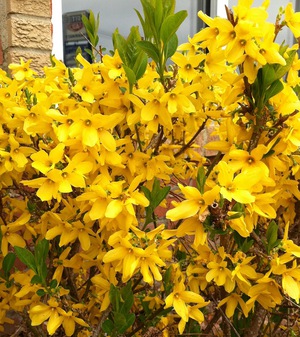 The plant does not tolerate drafts well, therefore, when choosing a place for its growth, this aspect must be taken into account immediately. The most optimal is a place with a lot of sun, which is closed from winds and drafts, you can also use shaded places.
The plant does not tolerate drafts well, therefore, when choosing a place for its growth, this aspect must be taken into account immediately. The most optimal is a place with a lot of sun, which is closed from winds and drafts, you can also use shaded places.- So that in the future you can easily carry out plant care, planting young plants should be at a distance of at least 1.5 meters.
- Forsythia grows in any soil, but to get a beautiful and long-lasting flowering, you need to prepare a special soil. It should consist of sand, humus and leafy earth, which are taken in equal proportions.
- If the soil on the sites has high acidity, then lime or charcoal must be added.
How does forsythia reproduce?
Forsythia can multiply in several ways: cuttings and seeds... Most often, gardeners resort to cuttings. To do this, use the lower branches of the plant, which are in contact with the ground, they are rooted.Very often there are cases when these branches take root on their own, which makes it possible to get a new plant.
In the case when the method of grafting is chosen, it is necessary to cut off the lower branch and dig it in the open ground, covering it with earth by 10-15 centimeters. It is very important to cut the bark during planting so that the root system can form freely.
You can use the cuttings method from mid-summer to October. In late autumn, a young plant requires special protection. For this it must be covered with foil and cover with dry foliage or straw on top.
Today, options are available for planting a finished plant seedling. It is rooted in the ground and must be protected from freezing in winter.
Forsythia planting rules
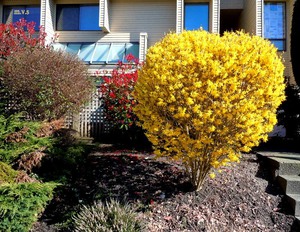 In order for the plant to quickly take root in the ground, for its planting it is necessary to dig holes measuring 50x50x60 cm. This will deepen the horse system into the ground by 40 centimeters. Each subsequent bush of the plant should be located at a distance of at least 1.5 meters.
In order for the plant to quickly take root in the ground, for its planting it is necessary to dig holes measuring 50x50x60 cm. This will deepen the horse system into the ground by 40 centimeters. Each subsequent bush of the plant should be located at a distance of at least 1.5 meters.
At the bottom of the forsythia hole, drainage must be laid by 10 centimeters. It can be broken brick, rubble... Next, a layer of sand of 10 centimeters is laid, then a substrate of sand, leafy earth and peat is laid. From above, the soil must be covered with wood ash.
A seedling is placed in a prepared hole and buried in earth, tamped and watered abundantly.
Plants that are planted in the spring do not require special care, and those that are planted in the fall must go through the mulching procedure. The material that will be used for covering must be air permeable, this will allow avoiding the debate of the kidneys during the winter thaws.
Basic rules for caring for forsythia
So that the shrub pleases with its flowering and beautiful forms, you need to take proper care of him.
- forsythia requires timely and proper feeding. The most optimal month for fertilization is April. As soon as it has finished flowering, it is necessary to apply mineral fertilization, it will help to form new flower buds, which will be needed next year;
- care for forsythia should include timely watering. Most often, the plant has enough water from natural precipitation, but on hot days it is necessary to provide additional watering at least once a month. A prerequisite for care is loosening the soil after each such watering. Loosening should take place to the depth of the shovel bayonet;
- basic care also involves pruning the plant. The main task of such an event will be to thin out the crown of the plant, which will help stimulate the growth of new, young shoots. You need to cut off old, damaged branches by 2/3 of their length. It is better to start the work itself immediately after flowering, before new leaves appear on the bush. In the case when the shrub has become very thick and wide, it is necessary to carry out corrective pruning.
Types of forsythia
In our climatic conditions, forsythia 5 different species grow... Each of these types has its own characteristics and external differences. Today the following plant species are distinguished:
- hanging or hybrid forsythia;
- ovoid or European plant;
- dark green forsythia.
Hanging forsythia
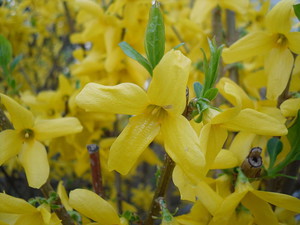 This type is most often used by gardeners on their plots. Photos with this plant can be found in many. This shrub reaches 3 meters, while the branches are arched, drooping.
This type is most often used by gardeners on their plots. Photos with this plant can be found in many. This shrub reaches 3 meters, while the branches are arched, drooping.
The stems are olive green, oval in shape with toothed edges. During flowering, bright golden flowers bloom on the plant, the diameter of which is about 2 centimeters. All of them collected in inflorescences of 3-5 pieces.
Forsythia hybrid
This plant is the result of experiments with selectors. It tolerates frost and drought well, while this shrub looks luxurious. Its height reaches 3.5 meters, shoots can be straight or inclined. During flowering, bright yellow inflorescences appear on the shrub.This species requires minimal maintenance, which makes it the most popular among gardeners.
Forsythia ovoid
In the photo, this type of shrub has a graceful shape. Its height varies within 2 meters, while the crown has widely scattered leaves and branches. During flowering, the entire bush is beautifully covered with bright yellow inflorescences. Once the flowering period is over, the shrub also looks amazing, as beautiful, oval-shaped leaves appear on it.
This type of forsythia blooms before everyone else and has an amazing view in autumn.
European forsythia
This plant attracts gardeners with its shape, it always forms an amazing hemisphere with a large diameter. The flowers on it during flowering have a bright lemon color, and the leaves are pale yellow. A feature of this plant is its durability: in one place the plant can grow up to 70 years.
Forsythia dark green
The name of the plant fully characterizes its appearance. The flowers on the plant have a beautiful light salad color, and the leaves are dark green. This species is undemanding to care for, is not afraid of drought, and its planting is also easy. The plant can grow even in arid areas.
Diseases and pests that forsythia is afraid of
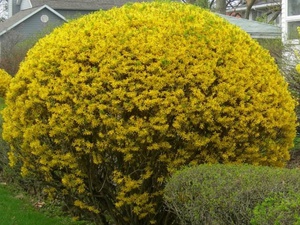 Basically, this plant is not afraid of diseases and pests. But sometimes you can find a fungal disease such as Phomopsis... Small wart-shaped growths appear on the plant. It is impossible to cure such a disease, it is necessary to dig up the old forsythia and put a new one in its place.
Basically, this plant is not afraid of diseases and pests. But sometimes you can find a fungal disease such as Phomopsis... Small wart-shaped growths appear on the plant. It is impossible to cure such a disease, it is necessary to dig up the old forsythia and put a new one in its place.
You can also see leaves on the plant that are covered with small spots or specks - this is a sign of infection by the fungus Altenaria or Phyllosticta. You can fight this disease with the help of copper sulfate.
The fungi Lygus and Poeecilcapsus contribute to the formation of chestnut spots on the leaves. To fight, you must use an insecticide.
In the case when the plant begins to wilt, it can be treated with foundation or captan. You can also degrease the soil with carbation.
Very often the cause of forsythia lethargy can be decay of roots... To avoid such damage, it is necessary to adjust the correct watering. Optimal care in this case is 15 liters of water every 3 weeks.
In the case when the root system is rotten, then you do not need to immediately throw out the plant. It is enough to dig it out, cut off all damaged areas and soak the root system in a disinfecting solution for half an hour. Planting this bush should be done in a new, prepared hole. Only in this case the process of growing and reproduction will be problem-free.
What is the place of forsythia in landscape design
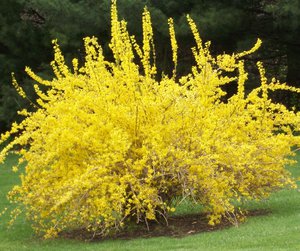 This plant is most often chosen for landscaping their summer cottages, garden plots. Today, this plant is actively planted in city squares, parks, as it requires a minimum of maintenance, but at the same time it has a luxurious look and can bloom remarkably. In addition to early flowering, this plant provides beautiful shade in summerand in winter it has a great view. Many landscape designers plant forsythia with other similar plants to form a beautiful, vibrant corner of nature.
This plant is most often chosen for landscaping their summer cottages, garden plots. Today, this plant is actively planted in city squares, parks, as it requires a minimum of maintenance, but at the same time it has a luxurious look and can bloom remarkably. In addition to early flowering, this plant provides beautiful shade in summerand in winter it has a great view. Many landscape designers plant forsythia with other similar plants to form a beautiful, vibrant corner of nature.
Also, today you can find bright compositions from various varieties of forsythia, which allows you to use bright colors of nature and create unique corners of wildlife that will decorate and delight everyone. Forsythia - whose breeding can decorate any place, can be a great element of extravagant design.
Forsythia is perennial unpretentious plantthat requires a minimum of maintenance. All you need is to buy a stalk, plant it correctly and take care of it throughout the year, and a beautiful green oasis on the site will be provided. Reproduction also does not require much effort. Such a plant is capable of blooming magnificently.
